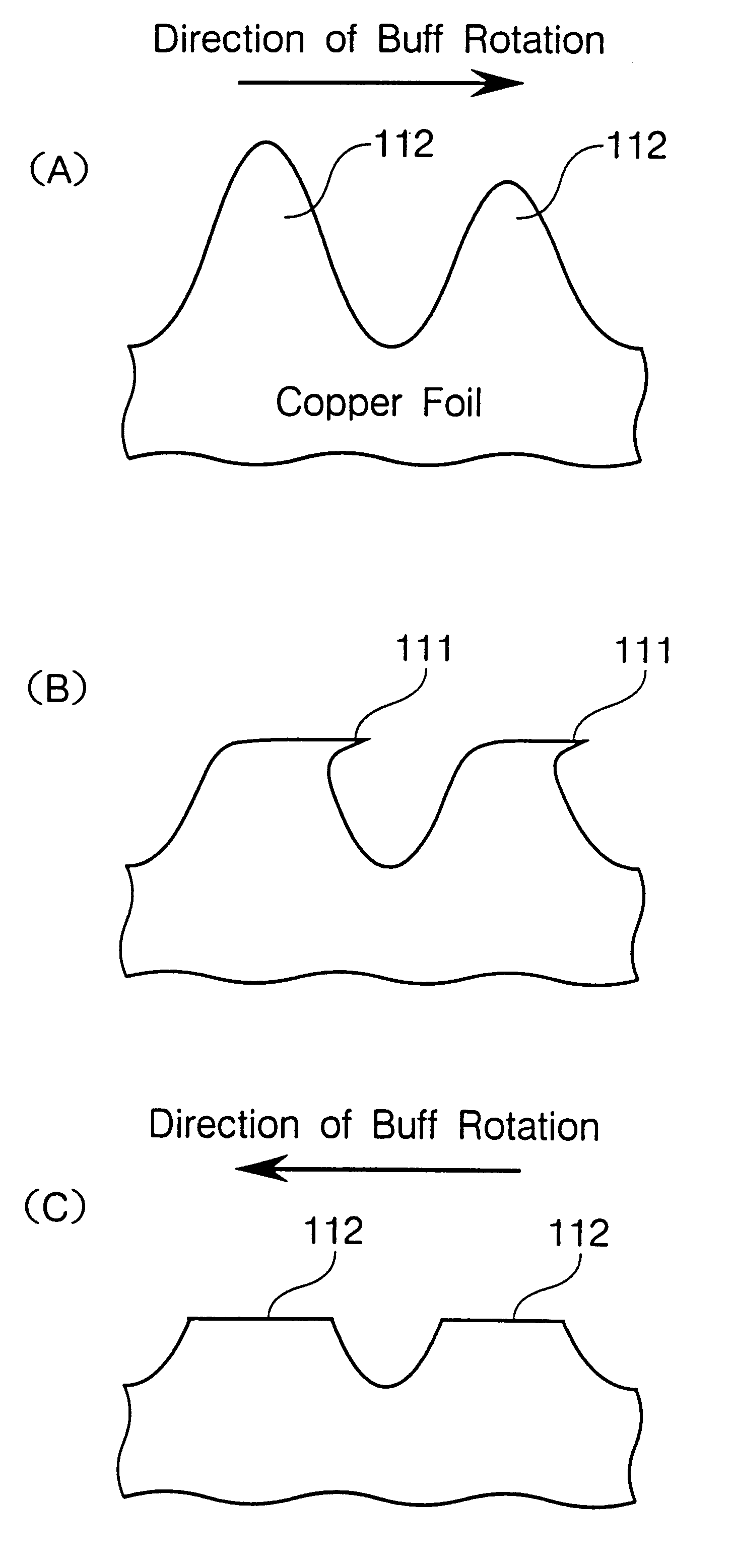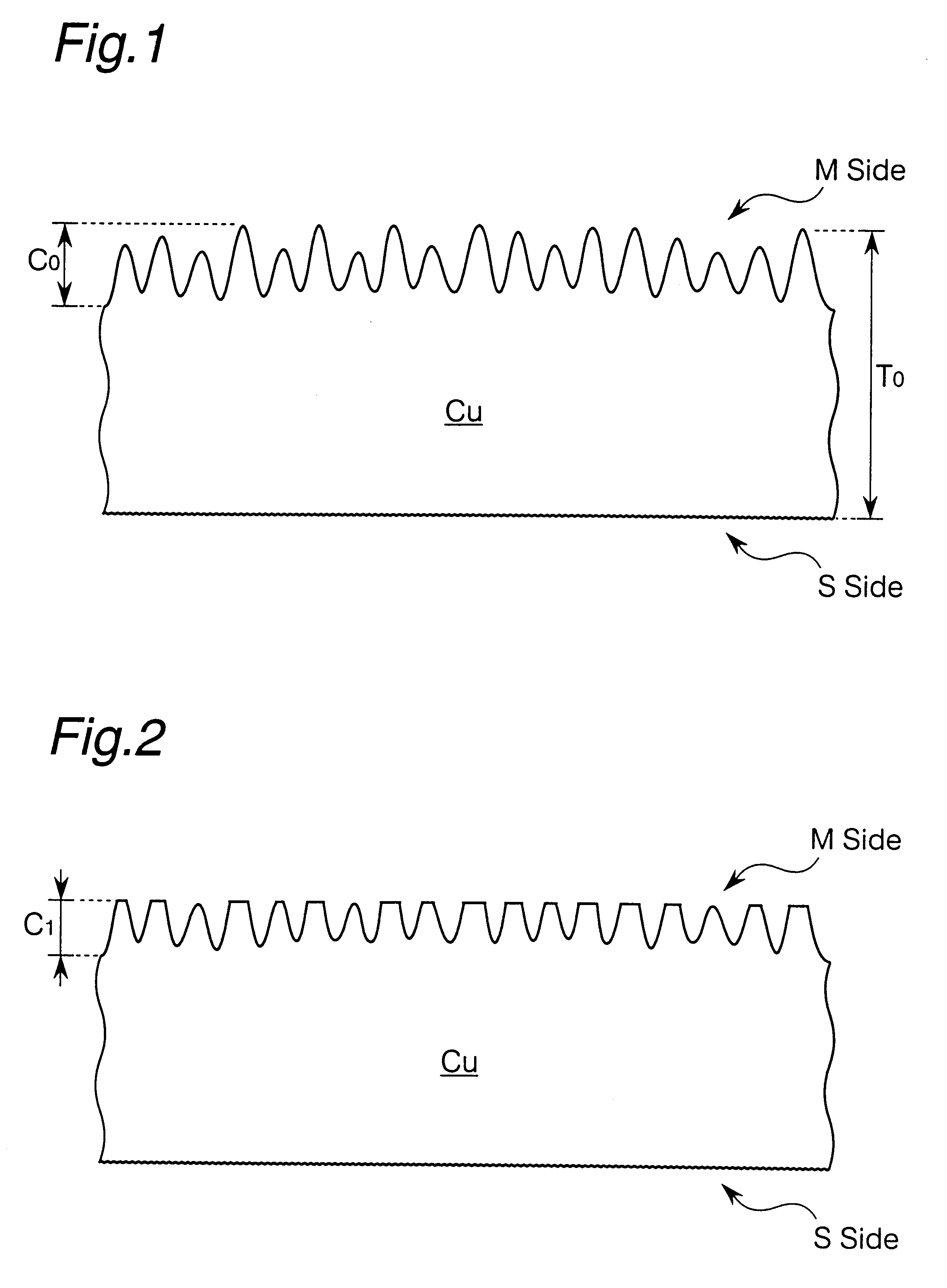Electrodeposited copper foil with its surface prepared, process for producing the same and use thereof
- Summary
- Abstract
- Description
- Claims
- Application Information
AI Technical Summary
Benefits of technology
Problems solved by technology
Method used
Image
Examples
example 1
An electrodeposited copper foil of 18 .mu.m (gauge thickness) average thickness having an average surface roughness of shiny side of 1.6 .mu.m and an average surface roughness (Rz.sub.1) of matte side of 4.5 .mu.m (18 .mu.m thick electrodeposited copper foil) was provided. An SEM photograph of the matte side of the 18 .mu.m thick electrodeposited copper is shown in FIG. 7.
While the electrodeposited copper foil was being passed through guide rolls, the matte side thereof was subjected to the first buffing conducted by means of #1000 buff comprising aluminum oxide as abrasive grains (manufactured by Tsunoda Brush K.K.) under conditions such that the rotating speed, press force and line speed were 1100 rpm, 19 A and 10 m / min, respectively (the first mechanical polishing). With respect to the electrodeposited copper foil before the first mechanical polishing, the distance between the highest apex of the protrudent parts and the deepest bottom of the depressed parts was 6 .mu.m. The aver...
PUM
| Property | Measurement | Unit |
|---|---|---|
| Thickness | aaaaa | aaaaa |
| Surface properties | aaaaa | aaaaa |
| Corrosion properties | aaaaa | aaaaa |
Abstract
Description
Claims
Application Information
 Login to View More
Login to View More - R&D
- Intellectual Property
- Life Sciences
- Materials
- Tech Scout
- Unparalleled Data Quality
- Higher Quality Content
- 60% Fewer Hallucinations
Browse by: Latest US Patents, China's latest patents, Technical Efficacy Thesaurus, Application Domain, Technology Topic, Popular Technical Reports.
© 2025 PatSnap. All rights reserved.Legal|Privacy policy|Modern Slavery Act Transparency Statement|Sitemap|About US| Contact US: help@patsnap.com



